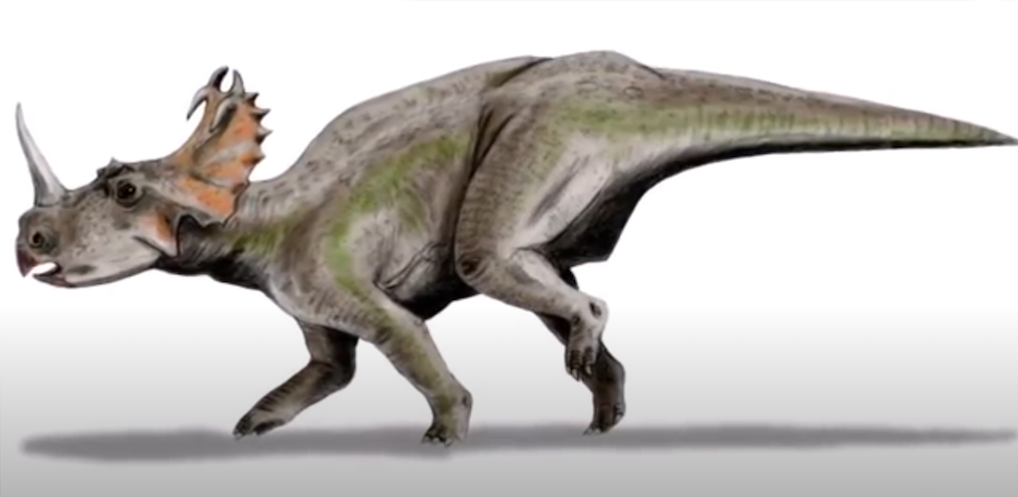 Cancers are rooted deeply in the evolutionary history of animals, according to scientists who have discovered the first case of a malignant cancer in a dinosaur.
Cancers are rooted deeply in the evolutionary history of animals, according to scientists who have discovered the first case of a malignant cancer in a dinosaur.
The discovery and diagnosis of an osteosarcoma in the fibula of a Centrosaurus apertu – a herbivorous horned dinosaur that lived about 77 million years ago – is described by scientists from Royal Ontario Museum (ROM) and McMaster University in Lancet Oncology.
Their report explains that the cancerous bone is part of a dinosaur fossil originally unearthed in Alberta in 1989. The badly malformed end of the fibula was initially presumed to be a healing fracture.
However a multidisciplinary team of palaeontologists, pathologists, radiologists and orthopaedic surgeons took an interest in the deformed bone and decided to investigate it further using modern medical imaging techniques.
They approached the dinosaur diagnosis similarly to how it would be approached for the diagnosis of an unknown tumour in a human patient.
“Diagnosis of aggressive cancer like this in dinosaurs has been elusive and requires medical expertise and multiple levels of analysis to properly identify,” said Professor Mark Crowther, Professor of Pathology and Molecular Medicine at McMaster University.
“Here, we show the unmistakable signature of advanced bone cancer in 76-million-year-old horned dinosaur — the first of its kind. It’s very exciting.”
After carefully examining, documenting, and casting the bone, the team performed high-resolution computed tomography (HRCT) scans.
They then thin-sectioned the fossil bone and examined it under a microscope to assess it at the bone-cellular level. Powerful three-dimensional CT reconstruction tools were used to visualize the progression of the cancer through the bone. Using this rigorous process, the investigators reached a diagnosis of osteosarcoma.
To confirm this diagnosis, they then compared the fossil to a normal fibula from a dinosaur of the same species, as well as to a human fibula with a confirmed case of osteosarcoma.
The fossil specimen was from an adult dinosaur with an advanced stage of cancer that may have invaded other body systems. Yet it was found in a massive bonebed, suggesting it died as part of a large herd of Centrosaurus struck down by a flood.
The investigators concluded that the bone showed signs of s aggressive cancer at an advanced stage. The cancer would have had crippling effects on the individual and made it very vulnerable to the formidable tyrannosaur predators of the time,” sad palaeontologists.
“It is both fascinating and inspiring to see a similar multidisciplinary effort that we use in diagnosing and treating osteosarcoma in our patients leading to the first diagnosis of osteosarcoma in a dinosaur,” says Dr Seper Ekhtiari, an Orthopaedic Surgery Resident at McMaster University.
“This discovery reminds us of the common biological links throughout the animal kingdom and reinforces the theory that osteosarcoma tends to affect bones when and where they are growing most rapidly.”